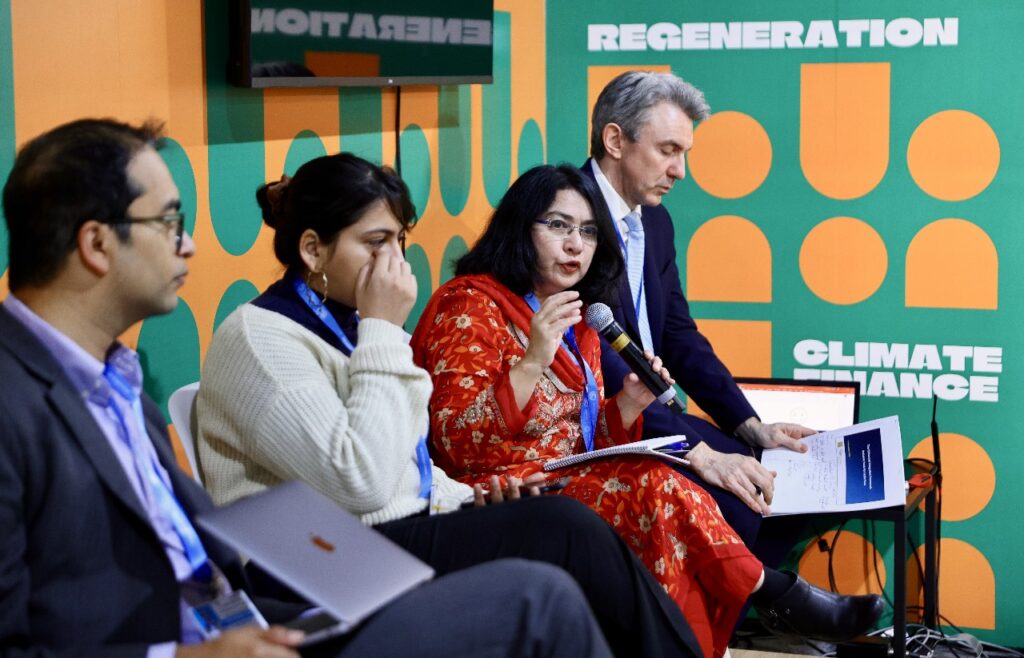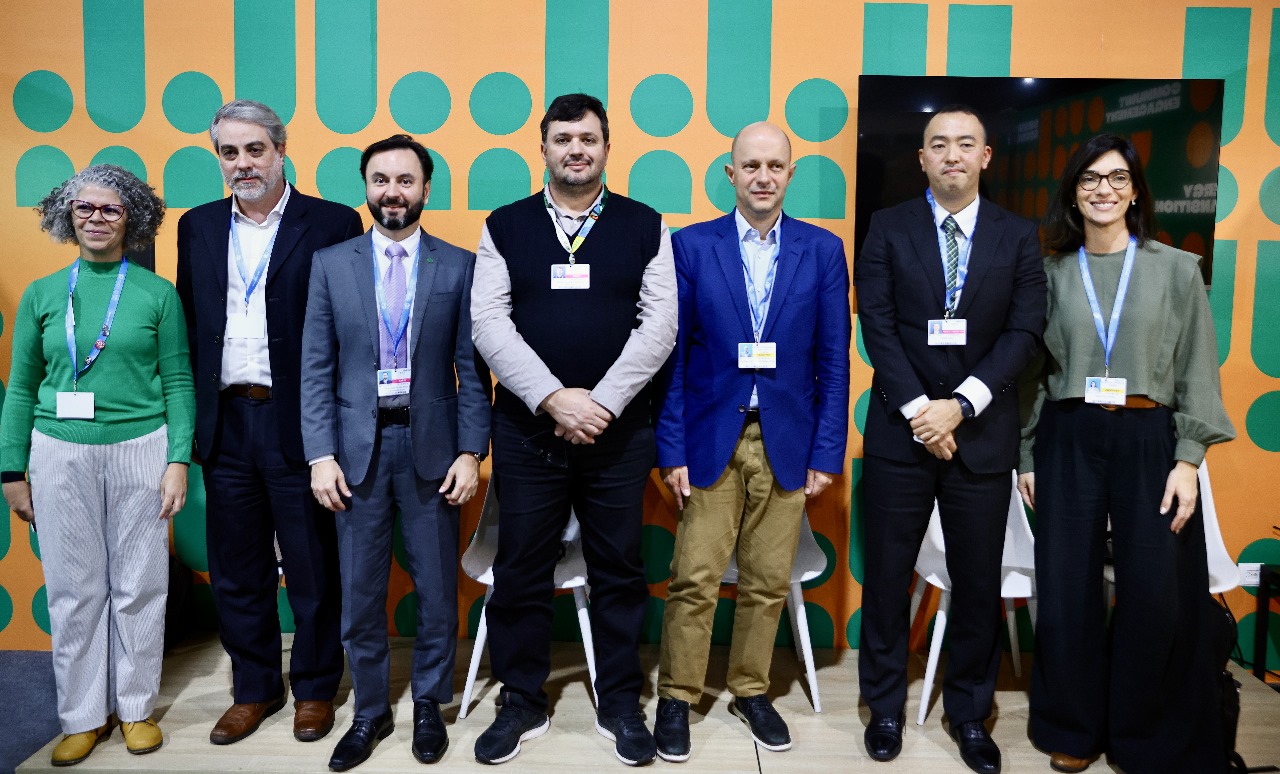While negotiations on the new climate finance target (NCQG) are moving slowly at COP29, the Regional Climate Foundations Pavilion ended its schedule by debating precisely the issue of finance — and provided a concrete example of how the challenges in this area can be overcome. This Thursday (21), two panels addressed the subject, bot from the Global South perspective.
In ‘Unlocking fiscal constraints for climate action: sovereign debt, climate risks, and clean energy-fueled growth opportunities’, speakers approached the vicious cycle in that the least developed countries are stucked. They are struggling with social and economic challenges, and at the same time, the most vulnerable countries to climate change. And they need to apply a significant amount of money to recover from each extreme climate event that hits them. “With these expenditures, they have little fiscal space to invest in climate action — and with no adaptation or mitigation, these countries will suffer with future extreme events again”, explained Fahmida Khatun, the executive director at Centre for Policy Dialogue, from Bangladesh.
These countries have a financial need, but to access credit is not easy precisely because, with little fiscal space, they end up classified by financial institutions as high-risk countries for investment. And a loan will cost more.
The way out is to change the way this classification is done, accounting not only for the risks of vulnerable countries, but also for the benefits they will derive from climate action. “We need to create a virtuous cycle. If we can show that there is less risk, or more benefits, borrowing will be cheaper, and those countries will create fiscal space to invest and growth with climate projects”, said Michael Jacobs, from ODI Global think-thank.

This is precisely what Brazil is doing with a national programme for the recovering of degraded pastures — earlier, this year, the country announced an agreement with the Japan International Cooperation Agency (JICA) for finance, in low interest, producers that wants to recover their degraded pastures. Japan will be the first country to contribute to the project, that aims to recover and convert for agriculture up to 40 million hectares of low productivity pastureland in ten years. The main opportunities and challenges of this type of project were discussed in the panel ‘Financing Green Futures: Strategies for Restoring Degraded Pastures in Brazil’.
“Brazil is not only one of the largest agriculture exporters in the world. We are also home of the largest rainforest on the planet, and we aim to increase our production combating the deforestation”, explained Bruno Brasil, a director of the Department of Sustainable Production and Irrigation at the Agriculture and Livestock Brazilian Ministry. One of the requirements for the farmers to get the loans with low cost is that they can’t deforest their lands, even if they get a permit to do it.
The panellists highlighted that not only money is necessary to cope with a project like this. Also, availability of technology and capacity building is needed. But the challenge doesn’t stop there, as explained Pedro Cunto, Special Advisor at the Brazilian Ministry: “I want to highlight the high cost of the hedge operation. As we get the money in dollars, we need to secure the operation, and this increase too much the cost oh the operation”. According to Cunto, the initial interest of 1.7% per year turns a rate of 13% after the hedge operation. “There are money available for this kind of partnership. But we need a solution for this gap”, claimed.
Despite the challenge of absorbing the hedge cost, the pioneer project shows from a good perspective how to find financial solutions for environmental restoration and climate action. “We are discussing in this multilateral forum that is the UNFCCC how to finance climate action. And this project connects perfectly the discussion inside the COPs with real life”, celebrated Thais Ferraz, a program director at Instituto Clima e Sociedade.
“It is an example and a unique opportunity to increase productivity generating social development and climate impact”, concluded.

